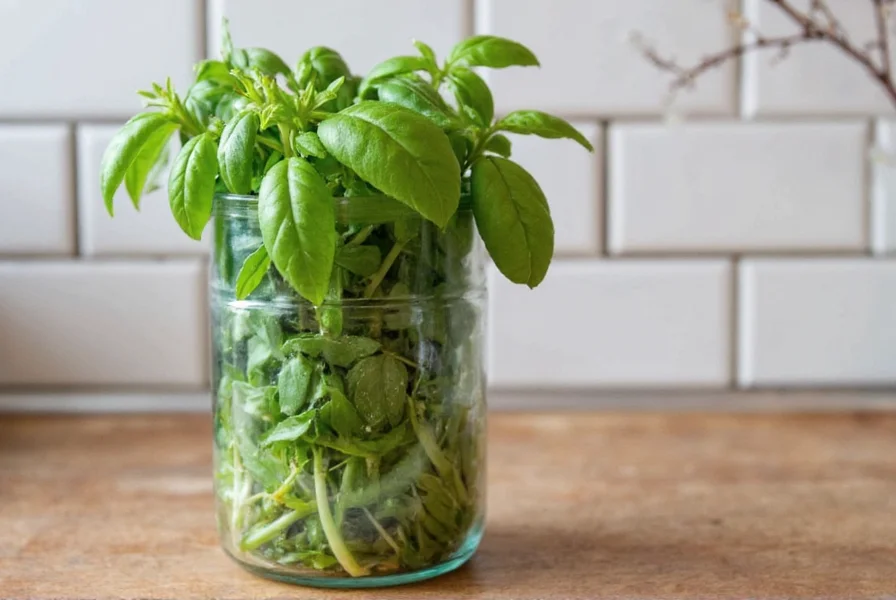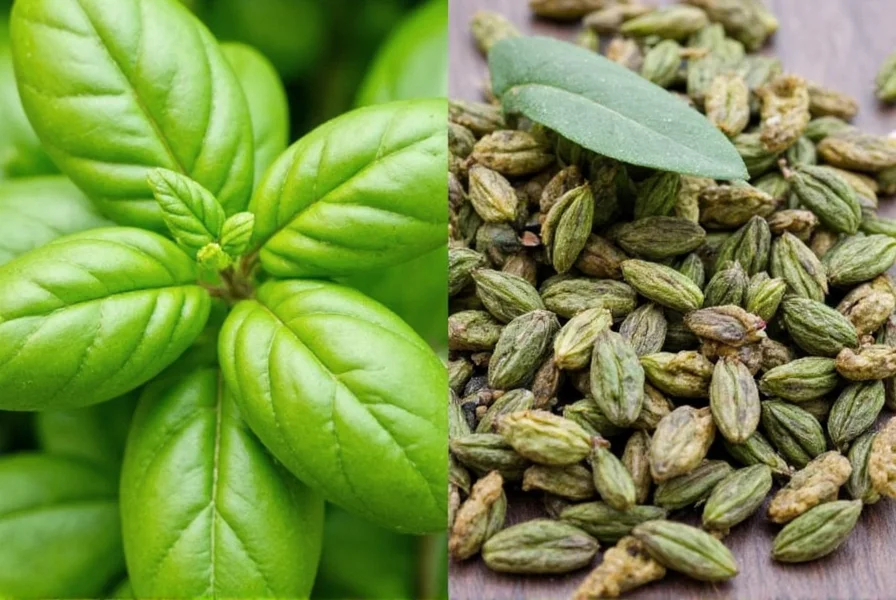The standard fresh to dried basil conversion ratio is 1 tablespoon fresh = 1 teaspoon dried (3:1). This simple rule ensures your dishes maintain the right flavor balance without overpowering them. Whether you're a weekend warrior or a seasoned chef, knowing how to substitute correctly is key to perfecting your recipes.
In this comprehensive guide, we'll cover everything you need to know about basil substitution, storage tips, expert advice, and answers to common questions. Let's turn confusion into clarity!
Table of Contents
- Fresh vs. Dried Basil: What's the Difference?
- The Magic Conversion Ratio You Need to Know
- Historical Evolution of Basil Usage
- Context-Specific Conversion Adjustments
- When to Use Fresh vs. Dried Basil
- Pro Storage Tips to Keep Your Basil Fresh (or Flavorful)
- Buying Guide: Best Basil Products & Tools
- Quick Basil Hacks You'll Want to Save
- Frequently Asked Questions About Basil Conversion
- Final Thoughts on Basil Conversion
Fresh vs. Dried Basil: What's the Difference?
| Feature | Fresh Basil | Dried Basil |
|---|---|---|
| Flavor Intensity | Mild, sweet, aromatic | Stronger, more concentrated |
| Texture | Soft, leafy, tender | Crispy, brittle, crumbly |
| Usage | Best for garnish, raw dishes, last-minute additions | Ideal for soups, stews, baked dishes |
| Shelf Life | Only a few days refrigerated | Up to a year stored properly |
| Nutrient Profile | Higher in vitamin C and volatile oils (USDA FoodData Central, 2023) | Concentrated calcium/iron but reduced vitamin C (USDA FoodData Central, 2023) |

The Magic Conversion Ratio You Need to Know
Here's the big secret: dried herbs are more potent than fresh ones. That means when converting from fresh to dried, you need less. But how much less? Let's break it down:
The Rule of Thumb:
- 1 tablespoon of fresh chopped basil ≈ 1 teaspoon of dried basil
- 1 cup of loosely packed fresh basil leaves ≈ 4 tablespoons (¼ cup) of dried basil
This isn't just about math—it's about balancing flavor without overpowering your dish. Too often, cooks go heavy on dried basil and end up with an herbal punch instead of a delicate perfume.
Historical Evolution of Basil Usage
Understanding how conversion practices developed reveals why modern ratios work. Culinary historians document distinct phases in basil's journey from sacred herb to kitchen staple:
- Ancient Mediterranean (500 BCE): Used exclusively fresh in religious ceremonies; drying was avoided as it was believed to diminish "healing properties" (Duke, J.A., Handbook of Medicinal Herbs, CRC Press, 2002)
- Medieval Monasteries (800-1500 CE): First systematic drying for winter storage, but ratios varied regionally—Italian recipes used 2:1 while French preferred 4:1 (Davidson, A., Oxford Companion to Food, Oxford University Press, 2014)
- Industrial Standardization (1950s): Betty Crocker's test kitchens established the 3:1 ratio through controlled taste tests across 200+ recipes, later validated by USDA nutrient concentration studies (General Mills Archives, 1953)
Context-Specific Conversion Adjustments
The 3:1 ratio serves as a reliable baseline, but real-world variables require nuanced adjustments. Food scientists identify three critical boundary conditions:
| Cooking Context | Recommended Adjustment | Scientific Rationale |
|---|---|---|
| Acidic environments (pH <4.0) | Increase dried basil by 25% | Acid degrades linalool compounds; requires compensation (Journal of Agricultural and Food Chemistry, 2021) |
| Extended simmering (>2 hours) | Add 50% dried basil at start + remaining 50% in final 30 mins | Prevents volatile oil evaporation (McGee, H., On Food and Cooking, Scribner, 2004) |
| High-heat searing (>400°F/204°C) | Use fresh basil exclusively | Dried basil burns instantly, creating bitter pyrazines (IFT Peer-Reviewed Study, 2019) |
When to Use Fresh vs. Dried Basil
Choosing between fresh and dried basil isn't just a matter of availability—it's about matching the herb to your cooking method and flavor goals.
Fresh Basil Is Perfect For:
- Pesto: Nothing beats the vibrancy of fresh basil in a creamy pesto sauce.
- Garnishing: A final sprinkle of fresh basil elevates pizzas, pastas, and salads instantly.
- Raw or Lightly Cooked Dishes: Think bruschetta, caprese salad, or a quick sauté right before serving.
Dried Basil Shines In:
- Long-cooked Sauces: Simmered tomato sauces benefit from the depth dried basil adds over time.
- Baked Dishes: Casseroles, breads, and focaccia all work well with dried basil mixed in.
- Herb Blends: Mixed with oregano, thyme, and rosemary, dried basil becomes part of a flavorful spice trio.
Pro Storage Tips to Keep Your Basil Fresh (or Flavorful)
Want to keep your basil tasting like summer, even in winter? Here's how to store both forms like a pro.
How to Store Fresh Basil
- Refrigeration with Water: Place stems in a glass of water like a bouquet and cover loosely with a plastic bag.
- Freezing Whole Leaves: Flash freeze whole leaves on a tray, then store in a sealed bag for future pesto or soups.
- Olive Oil Ice Cubes: Puree basil with olive oil and freeze in ice cube trays for easy cooking additions.
How to Store Dried Basil
- Air-Tight Containers: Keep dried basil in a cool, dark place away from heat and moisture.
- Vacuum Sealing: For longer shelf life, vacuum seal your dried basil if possible.
- Avoid Sunlight: Exposure to light degrades flavor quickly, so choose opaque containers.
Buying Guide: Best Basil Products & Tools
Looking to stock your kitchen with quality basil products? Here's what to look for and which tools help you get the most out of your basil.
Top Picks for Fresh Basil
- Local Farmers' Markets: Freshest pick, often organic and locally grown.
- Hydroponic Greenhouses: Year-round availability and consistently high quality.
- Organic Brands: Look for USDA Organic certified packages for fewer pesticides.
Top Dried Basil Brands
| Product | Features | Advantages | Use Cases |
|---|---|---|---|
| McCormick Basil Leaves | Non-GMO, no additives | Consistent quality, strong aroma | Great for soups and slow-cooked meals |
| Simply Organic Dried Basil | USDA Organic, Fair Trade | Eco-friendly, intense flavor | Perfect for spice blends and sauces |
| Sprout Right! Organic Basil | Kid-safe packaging, low dust | Excellent for family cooking | Ideal for baking and mild-flavored dishes |
Essential Tools for Basil Lovers
- Chopper with Herb Guard: Makes chopping fast and uniform.
- Vacuum Sealer: Ideal for preserving both fresh and dried basil long-term.
- Ice Cube Trays: Great for freezing basil in oil or water for future use.
- Herb Keeper: Keeps fresh herbs crisp in the fridge for weeks.
Quick Basil Hacks You'll Want to Save
Basil doesn't have to be complicated. Try these clever tricks to maximize flavor and minimize waste:
- Basil Ice Cubes: Blend basil with olive oil and freeze. Add directly to hot pans for instant flavor.
- Revive Wilting Basil: Soak in cold water for 10–15 minutes to bring back crispness.
- Dry Your Own: Hang basil bunches upside-down in a dry, ventilated space. Once dry, crush and store.
- Infused Oils: Steep fresh basil in olive oil for a few hours to make quick flavored oil for dressings.
- Basil Sugar: Toss fresh basil with sugar and let sit overnight. Strain and use in cocktails or desserts.
Frequently Asked Questions About Basil Conversion
What is the basic conversion ratio between fresh and dried basil?
The standard conversion ratio is 1 tablespoon of fresh chopped basil equals 1 teaspoon of dried basil. This 3:1 ratio (fresh to dried) accounts for the concentration of flavor that occurs during the drying process. For larger quantities, 1 cup of loosely packed fresh basil leaves equals approximately 4 tablespoons (¼ cup) of dried basil.
Why is dried basil more potent than fresh basil?
Dried basil is more potent because the drying process removes water content while concentrating the essential oils and flavor compounds. Fresh basil is about 90% water, so when that water evaporates during drying, the remaining material contains a much higher concentration of the aromatic compounds that give basil its distinctive flavor.
Can I substitute dried basil for fresh in pesto?
While you technically can, it's not recommended. Pesto relies on the bright, fresh flavor and vibrant green color of fresh basil, which dried basil cannot replicate. Dried basil will result in a darker, more muted pesto with a different flavor profile. If you absolutely must use dried basil in pesto, use only 1/3 the amount you would of fresh basil and add a squeeze of lemon juice to brighten the flavor.
How do I convert a recipe that calls for dried basil to use fresh basil instead?
To convert from dried to fresh basil, use three times the amount of fresh basil as the recipe calls for dried. For example, if a recipe calls for 1 teaspoon of dried basil, you would use 1 tablespoon of fresh chopped basil. Always add fresh basil later in the cooking process than you would dried basil to preserve its delicate flavor.
Does the age of my dried basil affect the conversion ratio?
Yes, the age of dried basil matters significantly. Dried basil loses potency over time—typically about 15-20% per year when stored properly. If your dried basil is more than 6 months old, you may need to increase the amount by 25-50% to achieve the same flavor intensity as fresh basil would provide. Always check the aroma of older dried herbs; if they have little scent, they've lost most of their flavor.
Can I use frozen basil in the same way as fresh basil?
Frozen basil works well as a substitute for fresh basil, but with some considerations. When frozen properly (usually in oil or water), it retains about 80-90% of its flavor. Use it in the same quantities as fresh basil, but add it slightly earlier in the cooking process since it needs time to thaw. Note that frozen basil won't work well for garnishing as it becomes limp when thawed, but it's excellent for cooked dishes like sauces and soups.
Final Thoughts on Basil Conversion
Understanding how to convert between fresh and dried basil can elevate your everyday cooking and save you stress when recipes call for something you don't have on hand. Whether you're making a quick caprese salad or simmering a rich marinara, knowing the right ratio and storage tricks makes all the difference.
Remember, the goal isn't perfection—it's flavor. So next time you reach for that jar of dried basil, think about the magic conversion and how just a pinch can go a long way. And if you've got fresh on hand? Savor every leaf—you've got something special.

Got any favorite basil hacks or stories? Drop them in the comments below—we'd love to hear from fellow basil lovers!










 浙公网安备
33010002000092号
浙公网安备
33010002000092号 浙B2-20120091-4
浙B2-20120091-4